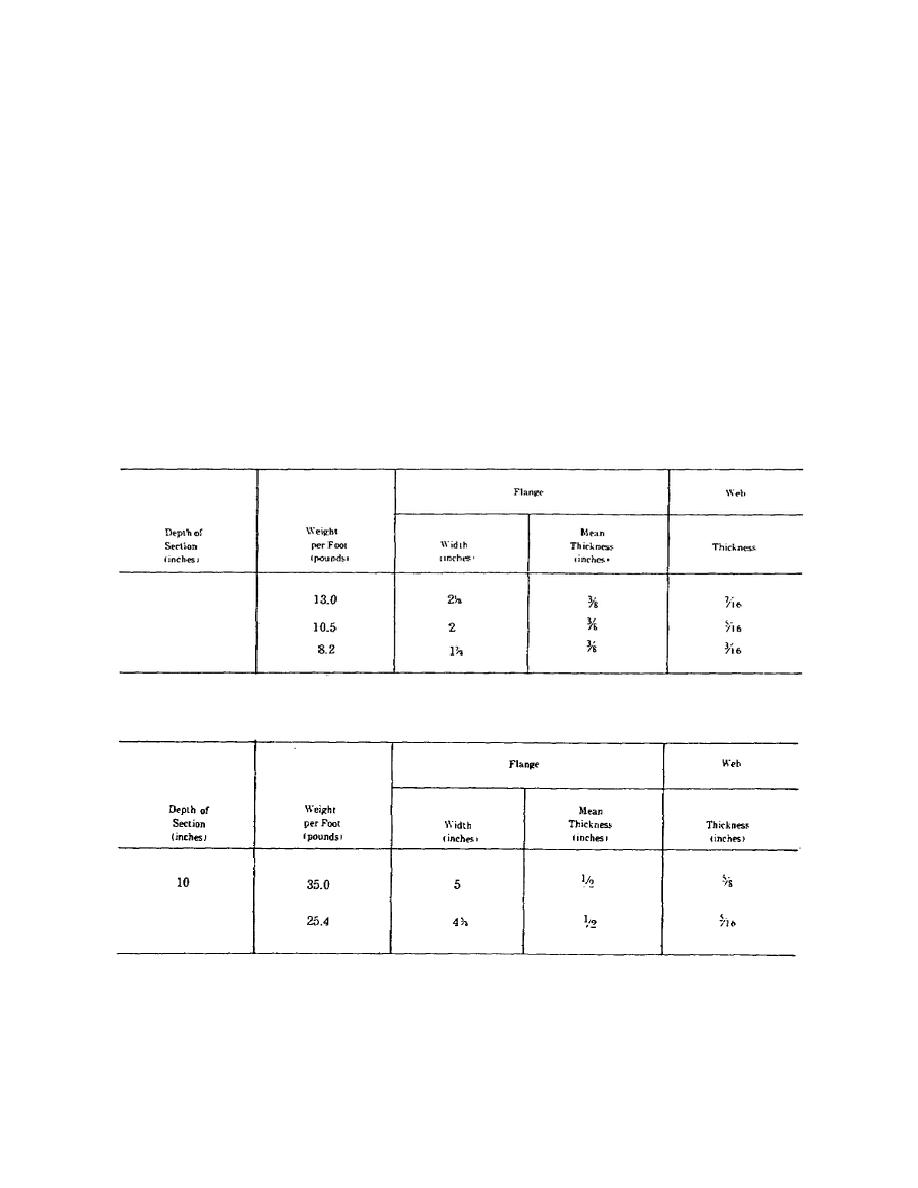
the letter H. Wide-flange shapes have the same
example, the notation 9 └┘ 13.4 indicates that the
general use as I-beams; however, wide-flange shapes
channel has a nominal depth of 9 inches and weighs
have greater strength and adaptability than I-beams.
13.4 pounds per linear foot.
Identification of a wide-flange shape is by its
nominal depth and weight per foot. For example, 24
b. Actual Size and Weight Versus Nominal
WF 76 designates a wide-flange section that is 24
Size Classification. It is important to note that the
inches deep and weighs 76 pounds per linear foot.
process for rolling structural-steel shapes permits a
wide range of actual sizes and weights within a single
(5) Channels (└┘). The channel is a
nominal size classification. Examples of actual
structural shape whose cross-section is similar to a
dimensions for the various weights of typical
squared letter C. Channels are principally used in
American Standard channels, beams, and wide-flange
locations where a single flat face without outstanding
shapes are given in tables 2-3, 2-4, and 2-5,
flanges on one side is required. The channel is not
respectively. It may be necessary to refer to tables
very efficient as a beam or column when used alone,
such as these for additional information about
but efficient built-up members may be constructed of
specific situations.
channels assembled together with other structural
shapes and connected by rivets or welds. Channels
are identified by their depth and weight per foot. For
Table 2-3. Detail Dimensions of Typical American Standard Channels.
Table 2-4. Detail Dimensions of Typical American Standard Beams
76


 Previous Page
Previous Page
